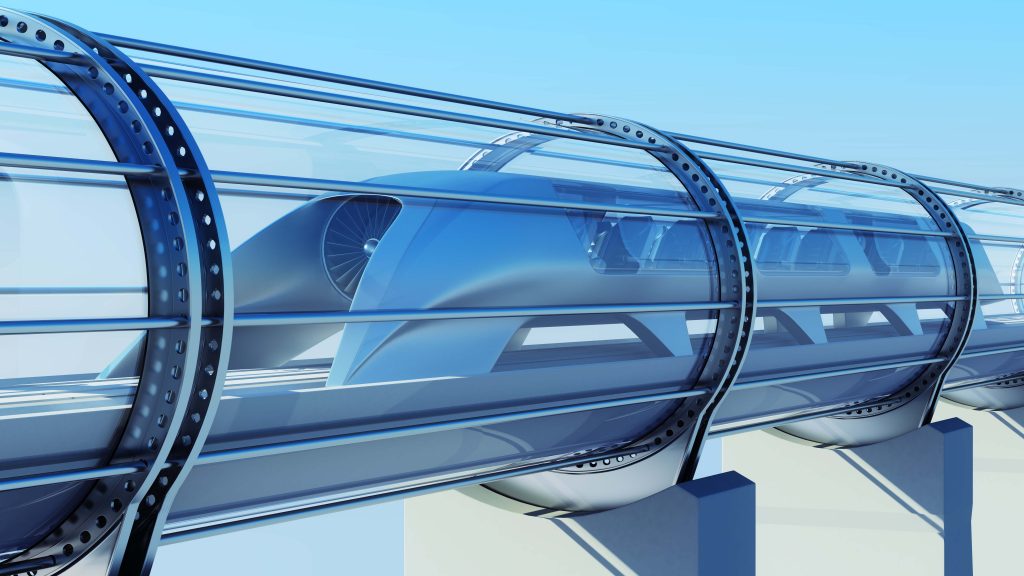Presently, India is making way for Bullet trains to move parallel with the first and second world countries but a group of enterprising students from BITS Pilani have already set foot much farther than this. Currently, they are working on building a hyperloop, which is much, much faster that bullet trains.
For instance, a bullet train would take about two hours to cover the distance between Mumbai and Ahmedabad, rushing at the speed of 320-350 km per hour maximum. The hyperloop reduces that time to merely 40 minutes, advancing at the anomalous speed of 1,200 km per hour. The idea sure sounds thrilling and quite unbelievable, and yet, is being worked upon by the young minds of BITS Pilani.
They take their inspiration from the ground-breaking “Hyperloop” travel idea of billionaire entrepreneur Elon Musk, and are about to complete the final stage of building “Hyperloop India’s” single-compartment capsule or pod. They have planned to present and test the same in late August at the Musk-owned SpaceX headquarters in Hawthorne, California, in the final round of a global contest that was initiated in 2015.
A BE final year student at BITS Pilani and a member of what is being called Team Hyperloop, Prithvi Shankar says:
Hyperloop is tube travel wherein you have a vehicle that is magnetically levitated and propelled inside a vacuum tube. The technology that is used for the propulsion and braking systems can vary.
The bright, young mind mentioned that the team is using a “scalability first” approach, making the design more flexible for the transportation of cargo as well as passengers. According to their “feasibility assessment”, the concept works in theory and will cost only 60 per cent of the total cost of the Mumbai-Ahmedabad Bullet train, if adopted. He said:
If hyperloop were to replace the high-speed rail that is currently being proposed… the entire infrastructure cost will be 40 per cent less, plus the maintenance costs will be much less. It will also require very little land acquisition.
Not only Bullet trains, but Hyperloop will be faster than the Maglev (Magnetic Levitation) trains as well, which themselves touch 650 km per hour and are currently operational in Japan and China.
Despite the fact that both are magnetically levitated, the reason why Hyperloop is going to have a upper hand over Maglev is that it will run inside a vacuum tube, inclining that it will avoid all air resistance and hence, will employ a different propulsion method. For the Hyperloop, passive permanent magnets are used, instead of the alternative electromagnets that require a constant electricity supply.
BITS’ Team Hyperloop India is using the material which differs from what the other 23 teams in the contest are using. Shankar says, Hyperloop India is going to use aircraft-grade aluminium, “which is four-times cheaper than carbon-fibre”. The latter is the one which the other teams are using to make their capsules.
The model will also stand out, he continues, given the capsule will be having an aerodynamic structure. He said:
Other teams are not dwelling on this, but we have kept our focus on an aerodynamic structure for the pod since at such a high speed of 1,200 km/hour, although there’s a very little air to be displaced, aerodynamic drag can become a powerful factor.
The team comprises of three members, two of which are student — Shankar and Shibhesh, who are workinh under Professor M.S. Das Gupta of BITS Pilani. This is the only team representing India and the second representing Asia, which will be going to California to present their model.
Back in 2015, in in response to the SpaceX design contest for which the firm built a one-mile (1.6 km) track on its premises and invited teams from all over the world to design hyperloop vehicles that could travel on the track, the tech-minds came together and rose as a team.
With 3 from India, a total of 216 teams coming in from all around the planet, Team Hyperloop India is now standing among the 24 finalists.
Now being supported and mentored by organisations like Invest India, RITES, NITI Aayog and Indian Railways, the team has already collaborated with IIMs, IITs and the Indian School of Business on the feasibility of the project.
READ: BITS Placements: Daikin offers swooping Rs 60 lakh package
READ: Bullet train to travel between Delhi and Varanasi in 3 hours

